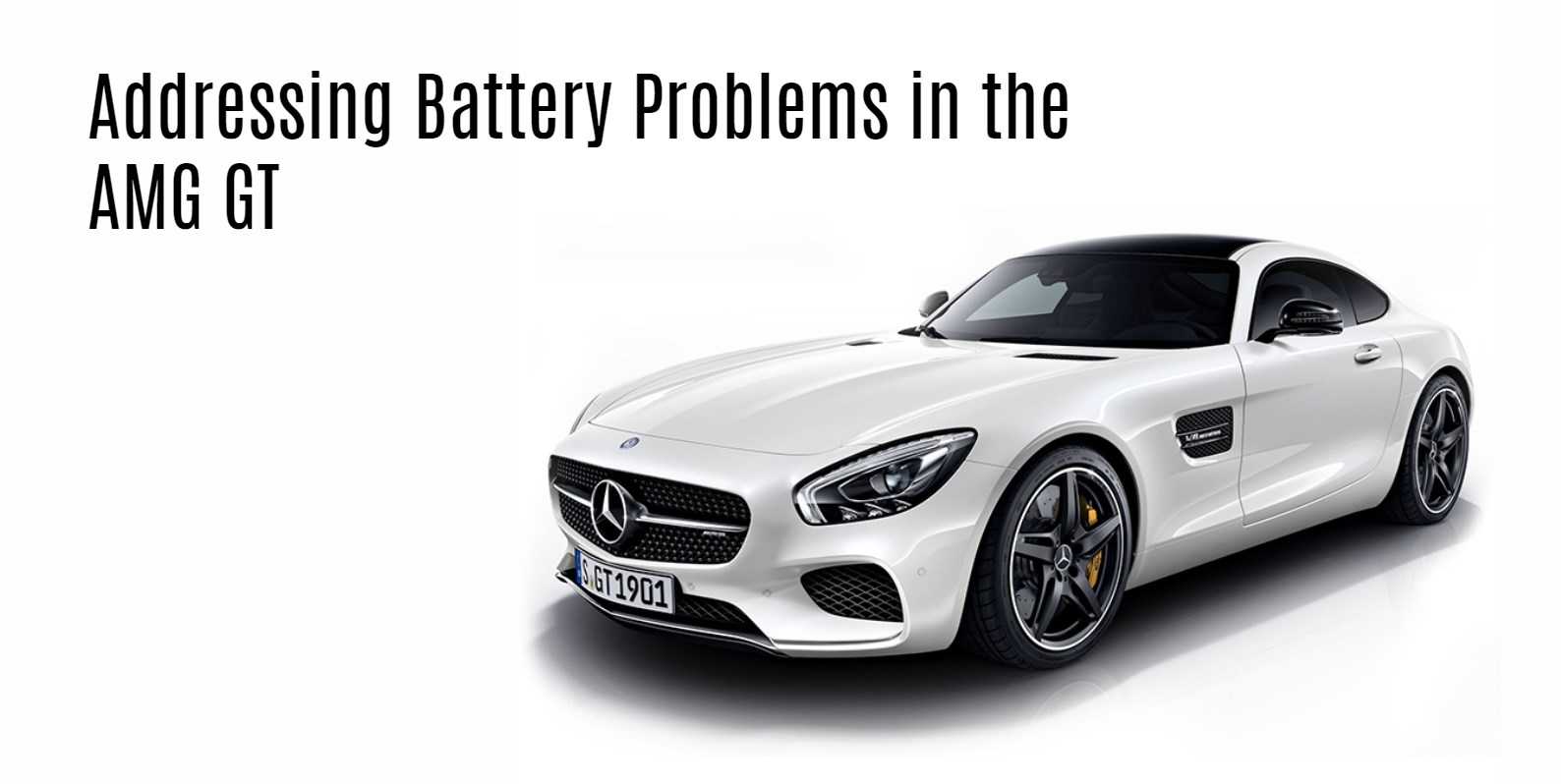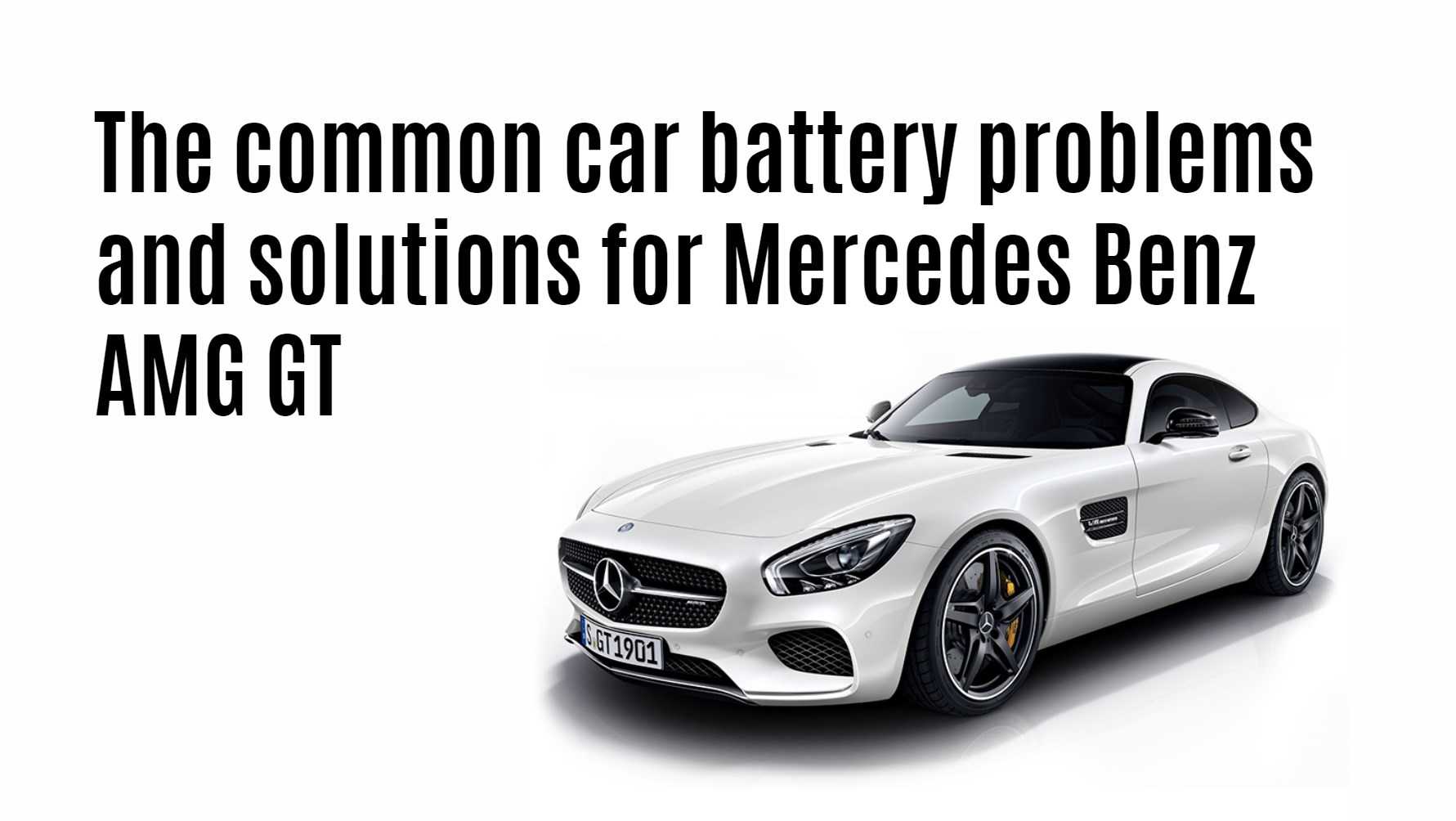The Mercedes Benz AMG GT is a high-performance sports car that combines luxury with exceptional engineering. However, like any vehicle, it is not immune to common car battery problems. Understanding these issues and their solutions can help ensure your AMG GT operates smoothly and reliably. In this article, we will explore the most frequent battery-related problems faced by Mercedes Benz AMG GT owners and provide effective solutions to address them.
1. Overview of the AMG GT Battery System
1.1 Battery Specifications
The Mercedes Benz AMG GT typically utilizes a high-performance lead-acid or AGM (Absorbed Glass Mat) battery:
- Voltage: Standard operating voltage is 12 volts.
- Capacity: The battery capacity generally ranges from 70Ah to 100Ah, depending on the specific model and year.
1.2 Importance of Battery Maintenance
Regular maintenance of your car battery is crucial for optimal performance. A well-maintained battery ensures reliable starting, efficient power supply for electrical components, and overall vehicle longevity.
2. Common Battery Problems in the Mercedes Benz AMG GT
2.1 Battery Drain Issues
One of the most common problems is unexpected battery drain:
- Symptoms: The car may struggle to start, or electrical components may not function properly.
- Causes: This can be caused by leaving lights on, malfunctioning electrical systems, or parasitic draws from accessories.
2.2 Corroded Battery Terminals
Corrosion at the battery terminals can lead to poor electrical connections:
- Symptoms: Difficulty starting the engine or intermittent electrical issues.
- Causes: Corrosion typically occurs due to battery acid leakage or exposure to moisture.
2.3 Weak Battery Performance
Over time, batteries lose their ability to hold a charge:
- Symptoms: Slow cranking when starting the engine or dimming headlights.
- Causes: Aging batteries naturally lose capacity after several years of use.
2.4 Battery Warning Light Activation
The battery warning light on the dashboard can indicate various issues:
- Symptoms: The light may illuminate while driving or when starting the vehicle.
- Causes: This could indicate a faulty battery, alternator issues, or electrical system malfunctions.
3. Solutions to Common Battery Problems
3.1 Addressing Battery Drain Issues
To resolve battery drain problems:
- Check for Parasitic Draws: Use a multimeter to measure current draw when the vehicle is off. Disconnect fuses one at a time to identify the source.
- Limit Accessory Usage: Ensure that all lights and electronic devices are turned off when the vehicle is not in use.
3.2 Cleaning Corroded Battery Terminals
To clean corroded terminals:
- Disconnect the negative terminal first, followed by the positive terminal.
- Use a mixture of baking soda and water to scrub away corrosion with a wire brush.
- Rinse with water and dry thoroughly before reconnecting the terminals (positive first).
3.3 Replacing a Weak Battery
If your battery shows signs of weakness:
- Testing: Use a multimeter to check voltage; a fully charged battery should read around 12.6 volts.
- Replacement: If the voltage is low or if the battery is older than 3–5 years, consider replacing it with a high-quality AGM or lithium option for better performance.
3.4 Addressing Battery Warning Light Activation
If the battery warning light appears:
- Diagnostic Check: Use an OBD-II scanner to read any error codes related to the charging system.
- Alternator Inspection: Check if the alternator is functioning correctly, as it may not be charging the battery adequately.
4. Preventive Maintenance Tips
4.1 Regular Inspections
Conduct regular inspections of your battery system:
- Look for signs of wear, corrosion, or leaks during routine maintenance checks.
4.2 Keep Connections Tight
Ensure that all connections are secure:
- Loose connections can lead to poor performance and increased resistance.
4.3 Charge Regularly
If you do not drive your AMG GT frequently:
- Consider using a trickle charger or smart charger to maintain optimal charge levels during periods of inactivity.
5. Latest News in Automotive Battery Technology
Recent advancements in automotive battery technology continue to enhance performance and safety:
- Innovations in lithium-ion technology are leading to lighter, more efficient batteries that offer longer lifespans.
- Research into solid-state batteries promises increased energy density and safety features in future models.
6. Frequently Asked Questions (FAQs)
6.1 How often should I check my car battery?
It’s advisable to inspect your car battery every three months, especially before long trips or seasonal changes.
6.2 Can I jump-start my Mercedes Benz AMG GT?
Yes, but ensure you follow proper jump-starting procedures to avoid damaging the vehicle’s electrical system.
6.3 What is the average lifespan of a car battery?
Most car batteries last between 3 to 5 years, depending on usage and maintenance practices.

7. Conclusion
In conclusion, maintaining the car battery of your Mercedes Benz AMG GT is essential for ensuring reliable performance and longevity. By understanding common battery problems and implementing effective solutions, you can significantly enhance your vehicle’s efficiency and reliability on the road. Regular inspections, proper cleaning, and timely replacements will keep your AMG GT performing at its best.At Redway Battery, we specialize in manufacturing high-quality Lithium LiFePO4 solutions tailored to meet diverse customer needs worldwide. With our extensive experience in this field, we provide custom solutions quickly for wholesale and OEM customers. For a quick quote or more information about our products, please contact us today!




